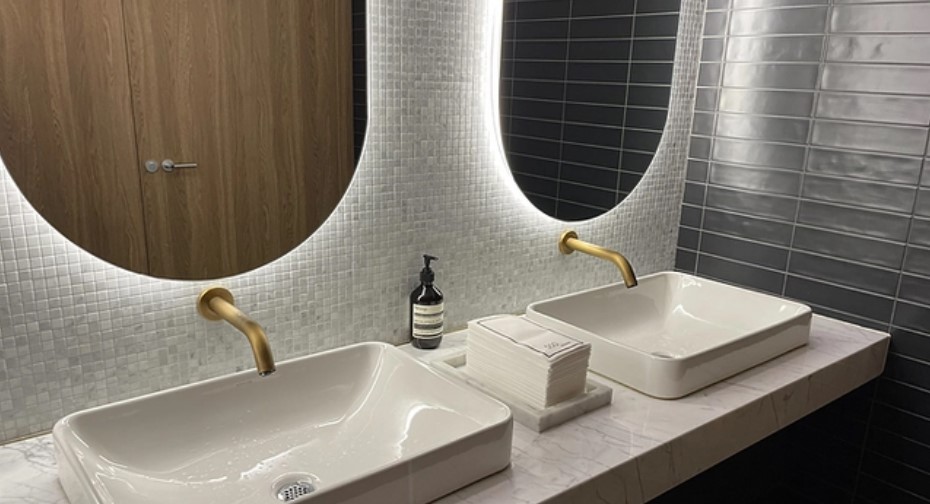Embracing Hygiene and Efficiency: The Evolution of Touchless Bathroom Faucets

In an era where hygiene and technological advancements have taken center stage, touchless bathroom faucets have emerged as a pivotal innovation in the realm of modern facilities. These sensor-activated marvels offer a blend of convenience, water conservation, and enhanced hygiene, revolutionizing the way we interact with our bathroom fixtures. This blog delves into the world of touchless bathroom faucets, exploring their benefits, technology, environmental impact, and considerations for installation.
The evolution of touchless bathroom faucets has captured the attention of experts. With their intricate understanding of functionality and aesthetics, plumbing design experts recognize the transformative impact of touchless faucets, redefining standards and propelling the industry toward a more sustainable and hygienic future.
The Touchless Faucet Revolution: A Glimpse into the Future
The conventional bathroom faucet, although functional, has its limitations. The act of turning handles or levers requires physical contact, which can lead to the accumulation of germs and bacteria on the faucet surface. Touchless bathroom faucets, on the other hand, offer a futuristic solution by eliminating the need for direct contact. These faucets employ cutting-edge sensor technology that detects the presence of hands or objects, triggering the water flow without requiring a touch.
Benefits Beyond Convenience
- Enhanced Hygiene: One of the most significant advantages of touchless faucets is their contribution to improved hygiene. By eliminating the need to touch potentially contaminated surfaces, these faucets minimize the spread of germs, bacteria, and viruses, fostering a cleaner and healthier environment.
- Water Conservation: Touchless faucets are equipped with intelligent sensors that control the flow of water, turning it on only when necessary. This feature translates to reduced water wastage, making touchless faucets an environmentally responsible choice.
- Ease of Use: Touchless faucets are designed with user convenience in mind. They are particularly beneficial for individuals with limited mobility, as the automated functionality eliminates the need for twisting or turning handles.
- Reduced Maintenance: The absence of handles or levers not only reduces the risk of wear and tear but also simplifies the cleaning process. With fewer crevices for dirt and grime to accumulate, touchless faucets are easier to maintain.
Behind the Scenes: How Touchless Faucets Work?
The technology driving touchless bathroom faucets is both fascinating and intricate. These faucets typically employ infrared sensors that emit an invisible beam of light. When an object, such as hands, is placed under the faucet, the sensor detects the interruption in the light beam and signals the valve to open, allowing water to flow. Once the object is removed, the sensor detects the change and shuts off the water. This seamless interaction between human presence and sensor technology forms the foundation of touchless faucet operation.
Environmental Impact and Water Efficiency
In a world grappling with water scarcity and environmental concerns, best touchless faucets offer a beacon of hope. Traditional faucets can inadvertently lead to excessive water usage, as they may remain running due to forgetfulness or improper closure. Touchless faucets, however, mitigate this issue by ensuring water flows only when needed. This reduction in water wastage contributes significantly to water conservation efforts, making touchless faucets an ally in the global fight against resource depletion.
Considerations for Installation
While touchless faucets offer a plethora of benefits, their installation requires thoughtful consideration:
- Power Source: Touchless faucets require a power source to operate the sensors. These sources can include batteries or a connection to an electrical outlet. Homeowners should choose an option that aligns with their preferences and bathroom setup.
- Compatibility: Before purchasing a touchless faucet, it’s essential to ensure compatibility with the existing plumbing system. Some touchless models may require modifications to the plumbing setup, which should be factored into the installation process.
- Maintenance and Repairs: While touchless faucets are generally low-maintenance, it’s crucial to have a basic understanding of troubleshooting and maintenance. In the event of sensor malfunctions or other issues, knowing how to address them can prevent unnecessary frustration.
- Aesthetics and Design: Touchless faucets come in a variety of styles and finishes. Homeowners should select a design that complements the bathroom’s aesthetics while meeting functional requirements.
Embracing the Future: Incorporating Touchless Faucets
The transition to touchless bathroom faucets represents more than just a technological upgrade; it signifies a commitment to a cleaner, more efficient, and sustainable lifestyle. With their blend of hygiene, water conservation, and user convenience, touchless faucets have the potential to redefine modern living spaces.
In a world that continually seeks innovations that enhance our lives, touchless bathroom faucets stand as a prime example of how technology can seamlessly merge with everyday routines. As we navigate the path toward a more sustainable future, embracing touchless faucets is a small yet impactful step we can take, revolutionizing our bathrooms and contributing to a healthier planet.
Conclusion
The touchless bathroom faucet has transcended its role as a mere accessory, transforming into a symbol of progress and mindful living. Its ability to merge technology, hygiene, and environmental responsibility underscores its importance in modern society. By embracing touchless faucets, we not only elevate the functionality of our bathrooms but also embrace a future where innovation and consciousness converge for the greater good. So, as you stand before your bathroom sink, imagine the possibilities that unfold when a simple wave of your hand sets water in motion, all without a single touch.

